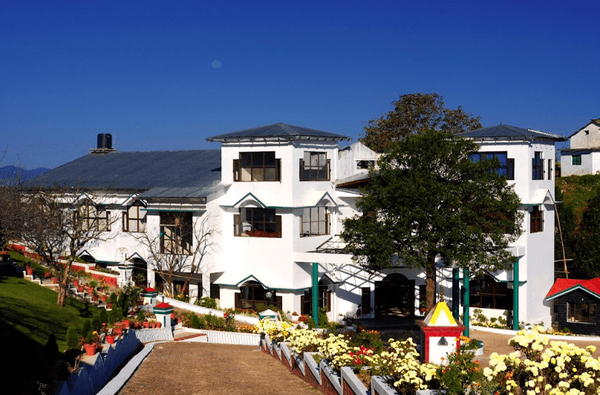Jal Mahal Jaipur: A Jewel Amidst the Waters
 Shivam Kumar
10 Dec, 2024
7 mins read
30
Shivam Kumar
10 Dec, 2024
7 mins read
30

Located in the heart of Jaipur, the Jal Mahal stands as a testament to Rajasthan's rich history, architectural brilliance, and natural beauty. Known as the "Water Palace," this iconic structure enchants visitors with its serene ambiance, stunning design, and breathtaking surroundings.
The History of Jal Mahal
The Jal Mahal, meaning "Water Palace," was originally constructed in the 18th century by Maharaja Madho Singh I as a summer retreat and a hunting lodge. It was not intended to serve as a royal residence but rather as a tranquil getaway for the royals to escape the sweltering heat of Rajasthan. The palace's strategic location amidst the Man Sagar Lake provided a serene environment and an ideal spot for bird watching and duck hunting.
Later, Maharaja Madho Singh II further renovated the palace, adding intricate architectural elements that make it a masterpiece of Rajput and Mughal architecture.
Architectural Marvel: A Blend of Rajput and Mughal Styles
The Jal Mahal's architecture is a stunning example of the harmonious blend of Rajput and Mughal styles. Its five-story structure, with four submerged in the lake when the water levels are high, creates an illusion of a floating palace.
Key Architectural Features:
- Red Sandstone Construction: The palace is built using locally sourced red sandstone, which enhances its beauty and durability.
- Chhatris and Jharokhas: The rooftop features beautifully designed chhatris (domed pavilions) that add a royal touch. The intricately carved jharokhas (overhanging balconies) showcase fine craftsmanship.
- Symmetry and Simplicity: The palace's symmetrical design reflects Mughal influences, while its understated elegance highlights Rajput aesthetics.
The Scenic Beauty of Man Sagar Lake
Surrounded by the Aravalli Hills, the Man Sagar Lake amplifies the charm of the Jal Mahal. The lake was artificially created in the 16th century by damming the Dharbawati River to combat water scarcity in the region.
The crystal-clear waters of the lake mirror the palace, creating a mesmerizing reflection that enchants photographers and tourists alike.
Flora and Fauna:
The lake is home to various aquatic species and migratory birds such as flamingos, herons, and pelicans, making it a haven for nature enthusiasts and bird watchers.
Restoration and Conservation Efforts
Over the years, the Jal Mahal faced neglect and deterioration. However, extensive restoration projects were initiated in the early 21st century to revive its grandeur. The restoration included cleaning the lake, conserving the palace's architectural elements, and reviving the surrounding ecosystem.
Today, the palace stands as a shining example of how heritage structures can be preserved while maintaining their historical essence.
Tourist Attractions and Activities
The Jal Mahal is a popular destination for both domestic and international tourists. While entry into the palace is restricted, there are several activities that visitors can enjoy in and around the site:
1. Boating on Man Sagar Lake
A boat ride on the tranquil waters of the lake offers a closer view of the palace and an opportunity to capture stunning photographs.
2. Bird Watching
The lake's surroundings are a paradise for bird watchers, offering glimpses of rare and exotic bird species.
3. Photography
The breathtaking views of the Jal Mahal, especially during sunrise and sunset, provide perfect backdrops for photography enthusiasts.
4. Exploring Nearby Attractions
Visitors can explore other attractions in Jaipur, such as Amer Fort, Hawa Mahal, and City Palace, which are located nearby.
Best Time to Visit Jal Mahal
The ideal time to visit Jal Mahal is during the winter months (October to March) when the weather is pleasant, and migratory birds flock to the lake. Evening visits are particularly enchanting, as the palace is illuminated, creating a magical ambiance.
How to Reach Jal Mahal
By Air
The nearest airport is Jaipur International Airport, located approximately 20 kilometers away.
By Train
The Jaipur Railway Station is well-connected to major cities in India and is just 10 kilometers from the Jal Mahal.
By Road
Jaipur is accessible via a network of highways, and the Jal Mahal is situated on the Amer Road, making it easy to reach by car or bus.
Tips for Visiting Jal Mahal
- Timing: Visit during early morning or late evening for the best views and to avoid crowds.
- Photography Gear: Carry a good camera to capture the palace's reflection and the surrounding natural beauty.
- Guided Tours: Opt for guided tours to learn about the history and architectural significance of the palace.
Conclusion
The Jal Mahal is more than just an architectural marvel; it is a symbol of Jaipur's rich cultural heritage and historical legacy. Its serene location amidst the Man Sagar Lake, coupled with its timeless beauty, makes it a must-visit destination for anyone exploring Rajasthan.
Written By:
Shivam Kumar



Hotels at your convenience
Now choose your stay according to your preference. From finding a place for your dream destination or a mere weekend getaway to business accommodations or brief stay, we have got you covered. Explore hotels as per your mood.





